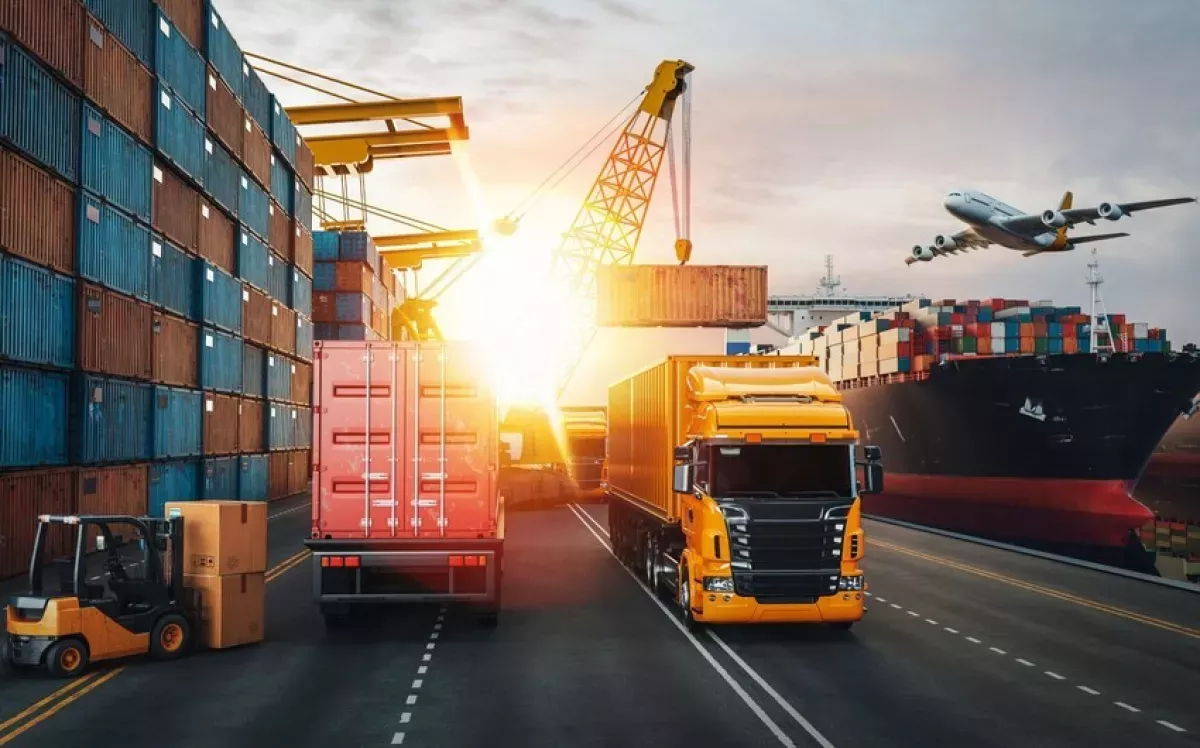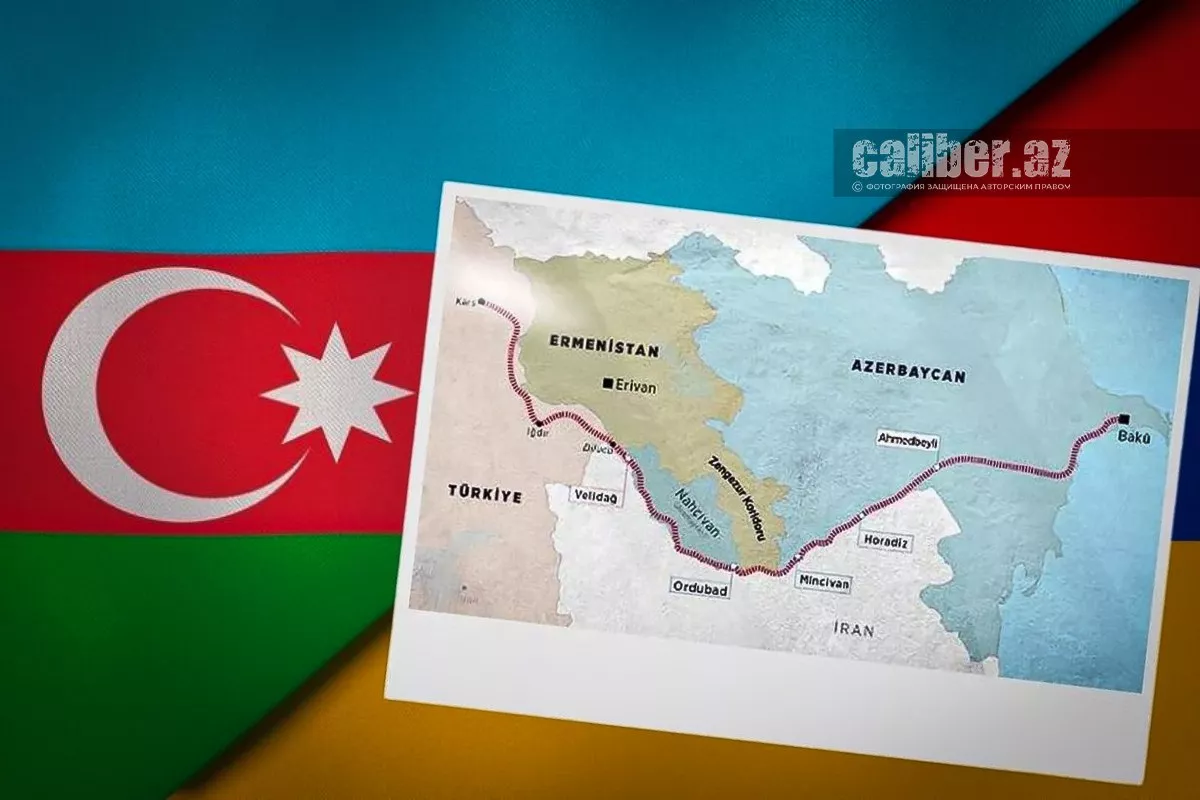Transit through Azerbaijan Peace in practice, not just on paper
Azerbaijan’s advantageous geographical location, combined with billions of dollars invested in railways, highways, seaports, and airports, has long turned the country into a key transport hub in the Caspian region. Over the past five years, large-scale work to revive the transport infrastructure in the Karabakh region has made it possible to unblock cargo routes across the South Caucasus.
Moreover, the country has already lifted restrictions on cargo deliveries to Armenia, with the first step being the transit of Kazakh grain through the territories of Azerbaijan and Georgia. And this is just the beginning: according to statements by Russian Deputy Prime Minister Alexey Overchuk, Russian Railways (RZhD) is preparing to organise the transit of Russian goods to Armenia through Azerbaijan.
Today, Azerbaijan leads many countries in the Caspian region in implementing large-scale initiatives to modernise transport infrastructure. Thanks to forward-looking state policies, a decision made nearly a quarter of a century ago to dedicate a portion of oil revenues to the transport sector has provided a strong foundation for developing key transit corridors to Georgia, Russia, and Iran. These corridors now ensure the efficient functioning of both East–West and North–South transit routes.
In cooperation with neighbouring partner countries, Azerbaijan is streamlining cross-border and customs procedures, improving sector-specific legislation, and placing significant emphasis on the digitalisation of cargo transportation.

Over the past five years, the focus of transport infrastructure construction has shifted to the liberated territories. In particular, in the East Zangezur Economic Region, the construction of new road and railway lines for an international transport corridor has been progressing rapidly, with completion expected around mid-2026. It is no surprise that Azerbaijan’s efforts in implementing the new regional transport strategy are already translating into concrete projects supported at the global level.
During a recent state visit to Kazakhstan, Azerbaijani President Ilham Aliyev noted that new transport routes are opening, projects enhancing connectivity across the wider Eurasian region are being implemented, and the Caucasus and Central Asia are becoming increasingly interconnected, often functioning as a single geographic space. The president also highlighted that one of the achievements of the Washington Summit held in August this year is the project The Trump Route for International Peace and Prosperity (TRIPP): “With President Trump’s name behind this project, it is clear that it will indeed be implemented, opening yet another route along the Middle Corridor. In addition to the traditional route, another one has been added – through Zangezur, with a turnover of 15 million tons and meeting the latest standards. The volume of cargo from Asia to Europe and back through our countries has potential for growth in itself, and there will also be even greater potential for receiving and shipping this cargo.”
Moreover, Azerbaijan has already lifted restrictions on cargo transit to Armenia, which had been in place since the occupation of its territories. In this regard, President Aliyev emphasised that the first such cargo was Kazakh grain, delivered to Armenia via transit through Azerbaijan and Georgia: “This is also a clear indication that peace between Azerbaijan and Armenia is no longer merely on paper but has already become a matter of practice.”
This step clearly demonstrates Azerbaijan’s commitment to a peaceful policy, its forward-looking vision, and its readiness to cooperate with all regional partners in support of large-scale global initiatives. Unsurprisingly, this message has been positively received by the country’s key trading partners.
Russian Railways (RZhD), together with regional colleagues, are currently working on organising the transit of Russian goods to Armenia through Azerbaijan, Russian Deputy Prime Minister Alexey Overchuk told the media on October 26. “The Azerbaijani side has confirmed the possibility of using the country’s railways for the transit of Russian products through Azerbaijan to Armenia,” the Deputy Prime Minister emphasised. He noted that there have been significant developments in this regard: RZhD, together with its regional partners, is addressing the logistics of these shipments, while parallel instructions have been issued via the Russian Ministry of Agriculture to fully utilise this new transport route.

Notably, the initiative by Azerbaijan to open transit opportunities for Armenia has also been received very positively in Yerevan. “I consider Azerbaijan’s decision to lift restrictions on transit shipments to Armenia to be historic. The import of the first batch of grain from Kazakhstan to Armenia through Azerbaijan will take place via the Azerbaijan–Georgia–Armenia railway route,” Prime Minister Nikol Pashinyan said. “It is also important for us to take the necessary steps in response: starting today, Armenia is ready to ensure transit of goods by road from Türkiye to Azerbaijan and back, as this is currently the only available infrastructure.” The Armenian Prime Minister also noted that the agreements reached on August 8 are already yielding positive results.
Overall, recent achievements indicate a fundamental shift in the implementation of cross-border corridors in the South Caucasus, reflecting the readiness of all regional countries to coordinate efforts in opening them. “The planned route from Azerbaijan’s main territory to Nakhchivan via Armenia—the Zangezur corridor—supports the development of trade among neighbouring countries,” Alexey Bezborodov, CEO of the research agency InfraNews, stated recently. “This short regional route will strengthen interregional ties, boost the economies of Azerbaijan and Armenia, and may also positively impact trade in Georgia, Iran, Iraq, and Türkiye.”
A similar view is shared in Türkiye, where recently the Minister of Transport and Infrastructure, Abdulkadir Uraloglu, told Kanal7 that the implementation of the TRIPP project will increase the throughput capacity of the Middle Corridor. “Alongside efforts to unlock the potential of the Baku–Tbilisi–Kars (BTK) railway, steps are also being taken to utilise the route between the western regions of Azerbaijan and the Nakhchivan Autonomous Republic (NAR),” Uraloglu noted. “Construction has already begun on the 224-kilometre railway from Kars to the border with NAR, and unlike the BTK, the Kars–Diliju railway line will be double-tracked, which will allow for an increased cargo flow.”
The transport minister also reminded that work on restoring and modernising Azerbaijan’s transport infrastructure is nearing completion, emphasising that he expects work on the Armenian section of the corridor to begin soon.

Thus, despite ongoing geopolitical differences, all countries across the vast Eurasian space are interested in developing regional connectivity, including the establishment of infrastructure for the Zangezur Corridor, which over time could also be integrated into the North–South International Transport Corridor (ITC).
Notably, progress on the ITC project was also achieved in mid-October: a trilateral meeting of government representatives from Azerbaijan, Russia, and Iran took place in Baku, resulting in a joint communiqué. The meeting focused on continuing efforts to enhance the region’s transit potential, accelerating projects to diversify transport communications, and expanding infrastructure along the ITC to increase cargo volumes along the North–South route to 15 million tonnes. In this context, an agreement was reached to establish a special working group on road transport, composed of representatives from the customs, border, and transport authorities of the three countries, as well as a working group tasked with preparing, within three months, an action plan for a series of measures.
Additionally, within the framework of the ITC Western route, the railway authorities of the three countries are working on developing multimodal container services. These efforts are already producing tangible results: according to figures presented during the meeting, cargo volumes along the ITC increased by 8.3% over the first three quarters of 2025, of which 10.4% came from road transport and 2% from rail. Moreover, according to Overchuk, in the first half of this year, the cargo turnover between Russia and Azerbaijan grew by 13%, reaching 6.8 million tonnes.
“We can see the progress currently taking place in Azerbaijan on the Azerbaijani section of the ITC. Very significant work is also underway in Iran on the acquisition of land for the Rasht–Astara railway, while design and survey work is ongoing, the main geodetic network has already been deployed, and preparations for aerial photography are underway—that is, a normal workflow for preparing the construction of the Rasht–Astara railway section is in progress,” Overchuk said recently.
According to him, the North–South corridor has substantial potential for expansion, including providing access to the markets of the Association of Southeast Asian Nations (ASEAN), which in essence is a global integration platform.








